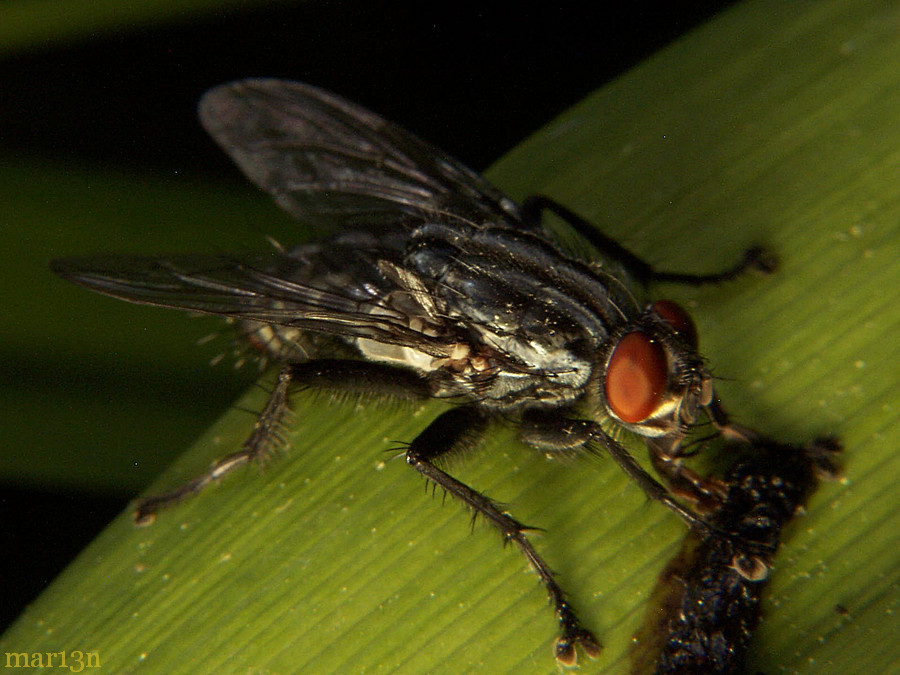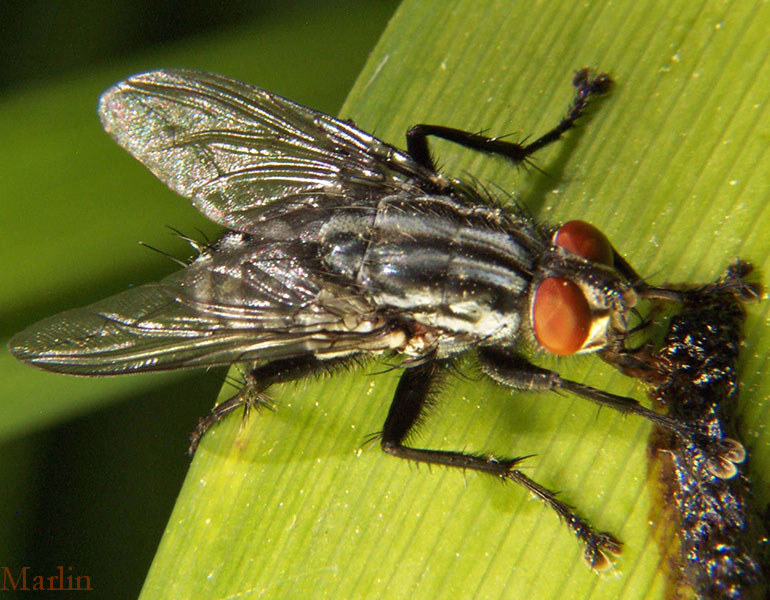Flesh Fly – Bellieria species

Family: Sarcophagidae — flesh flies, mouches a viande
Identification by Thomas Pape, Curator Ph.D. Zoological Museum, University of Copenhagen
This specimen measures about 12mm from head to tail. Flesh flies differ from the tachinid flies in that they lack the postscutellum, the large swelling underneath the scutellum on the thorax. Flesh flies have a prominent row of bristles (setae) on each side of the thorax just above the base of the hind leg in addition to another row of bristles just under the base of the wing. These two sets of bristles differentiate the flesh flies from the Muscid flies: they rarely have both sets. They most resemble blow flies, but are never metallic colored. They generally have highly contrasting black and grey stripes on the thorax, as well as a checkerboard-like pattern on the abdomen. Flesh flies also always have 4 rather than 2 or 3 bristles atop the thorax. This female fly has found a decaying caterpillar and is vacuuming up juices with her mouthparts.

Most flesh flies breed in carrion, dung, or decaying material, but a few species lay their eggs in the open wounds of mammals; hence their common name. Some flesh fly larvae are internal parasites of other insects.
Habitat: Wherever carcasses or excrement is exposed to daylight.
Food: Larvae feed on decaying flesh, dead insects, excrement, crabs, snails, and spiders.
Life Cycle: Eggs are deposited on or near suitable food. Larvae (maggots) complete growth within a few days, burrow into soil to pupate and overwinter. Adults emerge in summer.
A few species of large flesh flies can lay so many eggs on an animal carcass that it is transformed into a squirming mass of maggots when the eggs hatch. This thoroughly repulsive sight is really indication of a beneficial insect – the larvae help clean our world of dead animals.
Flies of North America – Order Diptera. Flies are prevalent in virtually all habitats, with over 16,000 species in North America. Flies can be distinguished from all other insects in that they only have one pair of normal wings. Most flies have compound eyes and mouthparts adapted for piercing, lapping or sucking fluids.
Flies Main | Flies Index | Tachinidae | Syrphidae | Bee Flies | Blow Flies | Flesh Flies
